Instruction
Impact: Training with isometrics
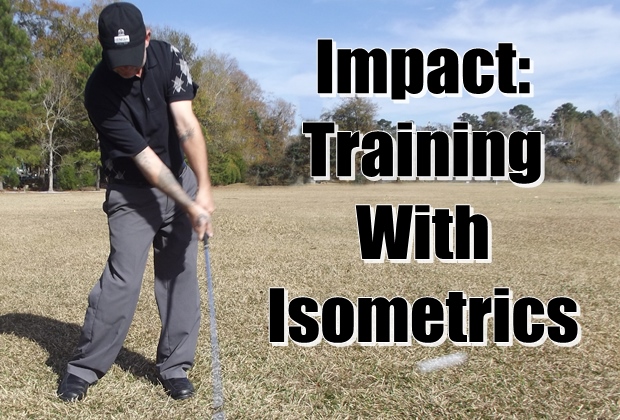
Golf’s vitally important “Impact Position” is one of the most difficult areas to isolate and work on. This is due to the dynamics of the motion and the fact that golfers are passing through this area of the swing at great speed. I would like to introduce you to some isometric exercises that will help improve your impact position, as well as increase your speed and flexibility.
TOOLS
I am using a swing trainer that is equipped with a golf club grip, but a simple exercise resistance band and piece of nylon rope work great as well. Make a loop and double up the knot so that it can be inserted above the door hinge between the door and the door frame. Once the door is closed, the resistance band will be secured between the door and door frame.
ROUTINE
Perform 10 reps of each exercise, 2-to-3 sets. Hold each position for 8-to-10 seconds. Holding static positions under the stress of the resistance band will allow your mind and body to process much more information and attain better alignments once you put your swing into motion. Isometrics are also a cornerstone for improving speed and flexibility in all types of sports.
Exercise 1
Insert your resistance band above the door hinge at its highest point. From here, we will work on properly sequencing our pivot from the top of swing position into the downstroke.
Photo A illustrates areas that you should be aware of when moving through your transition.
- Lower body supporting the upper body and a strong sense of pressure in your feet as you use the ground for leverage.
- The trail arm stays in front of the hip.
- Higher-handicap golfers should feel like they are moving laterally, as well as diagonally.
Photo B illustrates a common fault of lower-handicap golfers.
- Pushing off of the right side too early, causing the arms to get caught behind the trail hip.
- The club flattens too much.
- Sustaining the line of compression becomes difficult.
Exercise 2
Insert your resistance band above the middle door hinge. From here we will work on delivering the club from waist high into our impact position.
Photo C illustrates areas that you should be aware of when moving into your impact position.
- Hips open, head behind the ball.
- The weight is predominantly forward, with the lead leg straightening.
- The club swings left (for a right-handed golfer), as the hands get pulled past the ball location. The lead shoulder moves up and back.
Photo D illustrates a common breakdown of the impact position for higher-handicap golfers.
- The trail shoulder gets too high, and the weight is stuck on the back foot.
- The lead wrist cups and the trail wrist flattens too early, as hands are directed at the ball location instead of beyond it.
- The club shaft leans backwards.
Adding Speed
Begin introducing the golf ball and speed to your stroke by starting at the proper impact position as described in above Photo C.
- Hit 10 shots taking the club back to waist high, then contacting the ball (Photo E).
- Hit 10 more starting at impact and taking the club back to shoulder high.
- Hit shots from your standard address position and swing to a full finish, passing through your improved impact position (Photo F).
Above: An example of a resistance band and simple door hinge attachment.
Training
Isometric exercises are done in static positions, rather than being dynamic through a range of motion. The “Hold” and “Form” portion of each rep is very important, so perform your routine in front of a mirror or camera/video camera the first few times to insure precision. Isometrics are low-impact, quick-recovery exercises that can open up a whole new world of impact sensations and improvement for you.
- LIKE6
- LEGIT2
- WOW0
- LOL0
- IDHT0
- FLOP0
- OB0
- SHANK2
Instruction
Clement: Laid-off or perfect fade? Across-the-line or perfect draw?

Some call the image on the left laid off, but if you are hitting a fade, this could be a perfect backswing for it! Same for across the line for a draw! Stop racking your brain with perceived mistakes and simply match backswing to shot shape!
- LIKE0
- LEGIT0
- WOW0
- LOL0
- IDHT0
- FLOP0
- OB0
- SHANK0
Instruction
The Wedge Guy: The easiest-to-learn golf basic

My golf learning began with this simple fact – if you don’t have a fundamentally sound hold on the golf club, it is practically impossible for your body to execute a fundamentally sound golf swing. I’m still a big believer that the golf swing is much easier to execute if you begin with the proper hold on the club.
As you might imagine, I come into contact with hundreds of golfers of all skill levels. And it is very rare to see a good player with a bad hold on the golf club. There are some exceptions, for sure, but they are very few and very far between, and they typically have beat so many balls with their poor grip that they’ve found a way to work around it.
The reality of biophysics is that the body moves only in certain ways – and the particulars of the way you hold the golf club can totally prevent a sound swing motion that allows the club to release properly through the impact zone. The wonderful thing is that anyone can learn how to put a fundamentally sound hold on the golf club, and you can practice it anywhere your hands are not otherwise engaged, like watching TV or just sitting and relaxing.
Whether you prefer an overlap, interlock or full-finger (not baseball!) grip on the club, the same fundamentals apply. Here are the major grip faults I see most often, in the order of the frequency:
Mis-aligned hands
By this I mean that the palms of the two hands are not parallel to each other. Too many golfers have a weak left hand and strong right, or vice versa. The easiest way to learn how to hold the club with your palms aligned properly is to grip a plain wooden ruler or yardstick. It forces the hands to align properly and shows you how that feels. If you grip and re-grip a yardstick several times, then grip a club, you’ll see that the learning curve is almost immediate.
The position of the grip in the upper/left hand
I also observe many golfers who have the butt of the grip too far into the heel pad of the upper hand (the left hand for right-handed players). It’s amazing how much easier it is to release the club through the ball if even 1/4-1/2″ of the butt is beyond the left heel pad. Try this yourself to see what I mean. Swing the club freely with just your left hand and notice the difference in its release from when you hold it at the end of the grip, versus gripping down even a half inch.
To help you really understand how this works, go to the range and hit shots with your five-iron gripped down a full inch to make the club the same length as your seven-iron. You will probably see an amazing shot shape difference, and likely not see as much distance loss as you would expect.
Too much lower (right) hand on the club
It seems like almost all golfers of 8-10 handicap or higher have the club too far into the palm of the lower hand, because that feels “good” if you are trying to control the path of the clubhead to the ball. But the golf swing is not an effort to hit at the ball – it is a swing of the club. The proper hold on the club has the grip underneath the pad at the base of the fingers. This will likely feel “weak” to you — like you cannot control the club like that. EXACTLY. You should not be trying to control the club with your lower/master hand.
Gripping too tightly
Nearly all golfers hold the club too tightly, which tenses up the forearms and prevents a proper release of the club through impact. In order for the club to move back and through properly, you must feel that the club is controlled by the last three fingers of the upper hand, and the middle two fingers of the lower hand. If you engage your thumbs and forefingers in “holding” the club, the result will almost always be a grip that is too tight. Try this for yourself. Hold the club in your upper hand only, and squeeze firmly with just the last three fingers, with the forefinger and thumb off the club entirely. You have good control, but your forearms are not tense. Then begin to squeeze down with your thumb and forefinger and observe the tensing of the entire forearm. This is the way we are made, so the key to preventing tenseness in the arms is to hold the club very lightly with the “pinchers” — the thumbs and forefingers.
So, those are what I believe are the four fundamentals of a good grip. Anyone can learn them in their home or office very quickly. There is no easier way to improve your ball striking consistency and add distance than giving more attention to the way you hold the golf club.
More from the Wedge Guy
- The Wedge Guy: Golf mastery begins with your wedge game
- The Wedge Guy: Why golf is 20 times harder than brain surgery
- The Wedge Guy: Musings on the golf ball rollback
- LIKE86
- LEGIT13
- WOW6
- LOL1
- IDHT0
- FLOP4
- OB1
- SHANK8
Instruction
Clement: Stop ripping off your swing with this drill!

Not the dreaded headcover under the armpit drill! As if your body is defective and can’t function by itself! Have you seen how incredible the human machine is with all the incredible feats of agility all kinds of athletes are accomplishing? You think your body is so defective (the good Lord is laughing his head off at you) that it needs a headcover tucked under the armpit so you can swing like T-Rex?
- LIKE0
- LEGIT2
- WOW2
- LOL0
- IDHT0
- FLOP0
- OB0
- SHANK2
-

 19th Hole2 weeks ago
19th Hole2 weeks agoDave Portnoy places monstrous outright bet for the 2024 Masters
-

 19th Hole2 weeks ago
19th Hole2 weeks agoTiger Woods arrives at 2024 Masters equipped with a putter that may surprise you
-

 19th Hole2 days ago
19th Hole2 days agoJustin Thomas on the equipment choice of Scottie Scheffler that he thinks is ‘weird’
-

 19th Hole2 days ago
19th Hole2 days ago‘Absolutely crazy’ – Major champ lays into Patrick Cantlay over his decision on final hole of RBC Heritage
-

 19th Hole3 weeks ago
19th Hole3 weeks agoReport: Tiger Woods has ‘eliminated sex’ in preparation for the 2024 Masters
-

 19th Hole1 week ago
19th Hole1 week agoTwo star names reportedly blanked Jon Rahm all week at the Masters
-

 19th Hole1 week ago
19th Hole1 week agoReport: LIV Golf identifies latest star name they hope to sign to breakaway tour
-

 19th Hole1 week ago
19th Hole1 week agoNeal Shipley presser ends in awkward fashion after reporter claims Tiger handed him note on 8th fairway

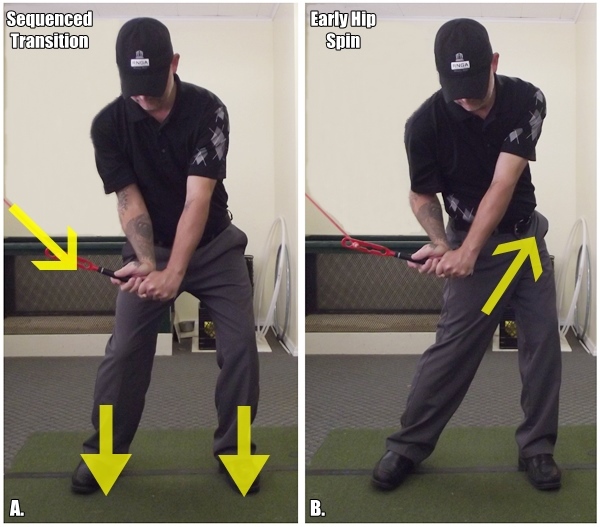
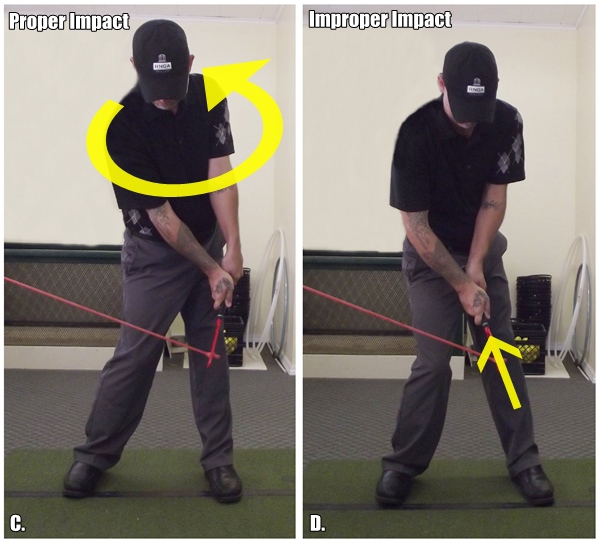
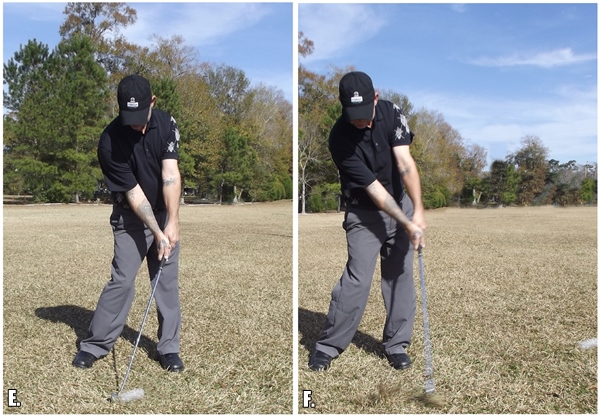
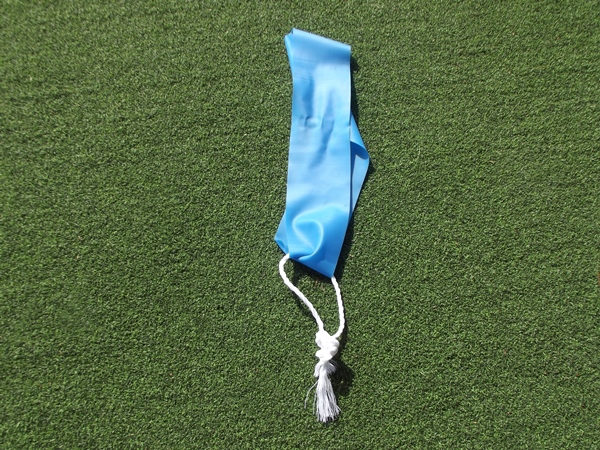














Jeff Kerr
Feb 2, 2014 at 1:21 pm
Good stuff Mike!
Michael Howes
Feb 2, 2014 at 1:40 pm
Thx for posting Jeff!
Jonathan
Feb 2, 2014 at 12:27 am
Thanks for the exercises, Michael. Going the resistance band route, it seems like it would be beneficial to tie it to a a cut off grip to make it similar to your G4, right? I have plenty of old irons that i could cut off a few inches below the grip. Thanks, again.
Michael Howes
Feb 2, 2014 at 10:03 am
Just PLEASE make sure your device is safe & secure. These exercise create a ton of resistance & pressure, so you do not want to be doing anything unsafe. Always check your bands before training. Look for weak spots and never use old, dry bands or tubing.
Jonathan
Feb 2, 2014 at 11:07 pm
I’ll be safe, but if I don’t attach a cut off grip, how would you go about holding the resistance band? Just grip the actual band like you would a club? Also, out of heavy, medium, and low resistance bands, which do you recommend using? How much resistance should we feel? Thanks for the reply.
Michael Howes
Feb 3, 2014 at 12:17 am
Yes Jonathan, use your golfing grip & place the band so that pressure is being applied to the trail hand index finger. Start with a flex that you are able to reach the positions & hold. Move to higher tension bands as your training progresses. Keys are Form & Hold.
Jonathan
Feb 4, 2014 at 7:38 pm
Thanks again, Michael.
Kammer
Jan 31, 2014 at 6:17 pm
Wonder if I could get forearmtats that would help with grip alignment. Huh hmmmm
Keith
Jan 31, 2014 at 12:04 pm
Good stuff! What’s the name of the trainer you’re using?
Michael Howes
Feb 1, 2014 at 8:40 pm
Thanks Keith.
The trainer is the G4, which Tom Lehman used to endorse. I do not think they make it anymore. Try the resistance bands, they work great too.